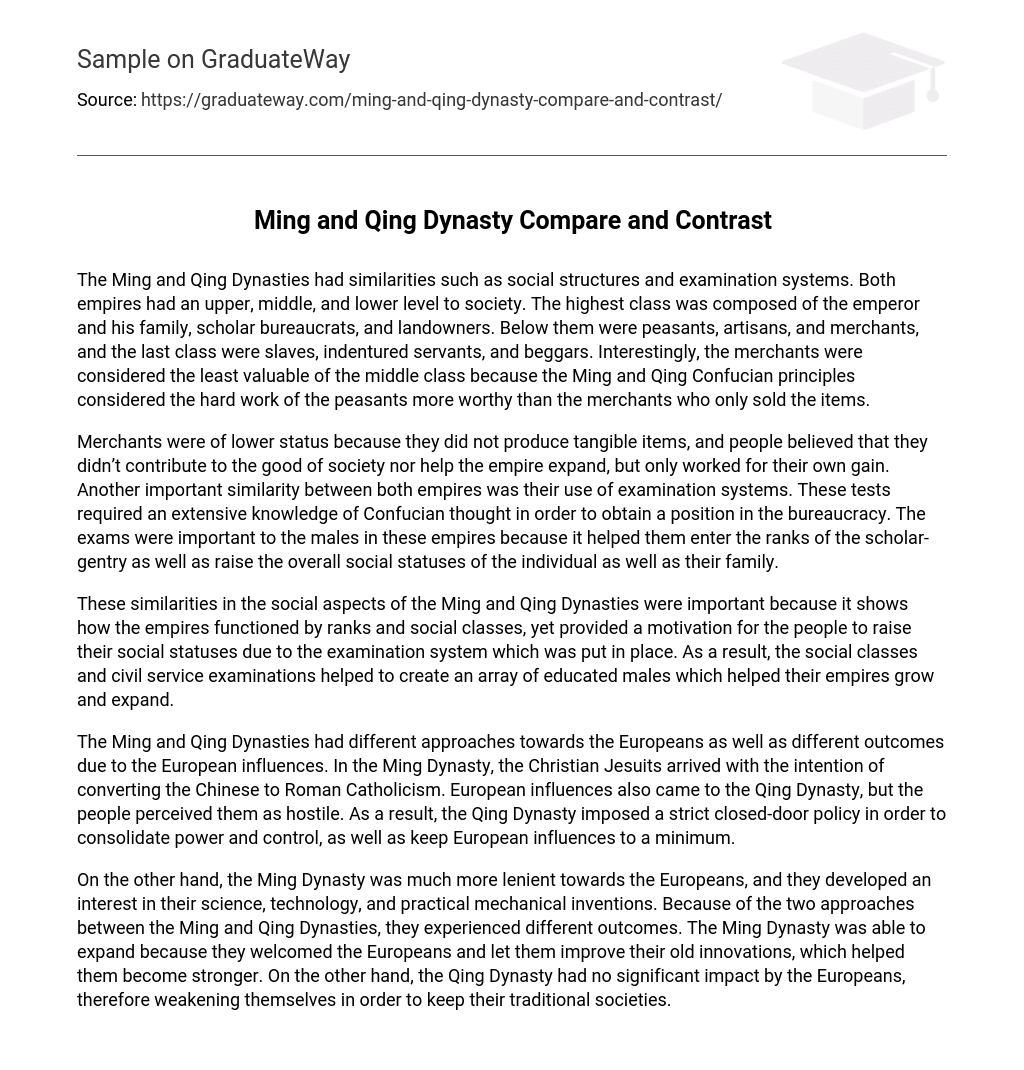The Ming and Qing Dynasties had similarities such as social structures and examination systems. Both empires had an upper, middle, and lower level to society. The highest class was composed of the emperor and his family, scholar bureaucrats, and landowners. Below them were peasants, artisans, and merchants, and the last class were slaves, indentured servants, and beggars. Interestingly, the merchants were considered the least valuable of the middle class because the Ming and Qing Confucian principles considered the hard work of the peasants more worthy than the merchants who only sold the items.
Merchants were of lower status because they did not produce tangible items, and people believed that they didn’t contribute to the good of society nor help the empire expand, but only worked for their own gain. Another important similarity between both empires was their use of examination systems. These tests required an extensive knowledge of Confucian thought in order to obtain a position in the bureaucracy. The exams were important to the males in these empires because it helped them enter the ranks of the scholar-gentry as well as raise the overall social statuses of the individual as well as their family.
These similarities in the social aspects of the Ming and Qing Dynasties were important because it shows how the empires functioned by ranks and social classes, yet provided a motivation for the people to raise their social statuses due to the examination system which was put in place. As a result, the social classes and civil service examinations helped to create an array of educated males which helped their empires grow and expand.
The Ming and Qing Dynasties had different approaches towards the Europeans as well as different outcomes due to the European influences. In the Ming Dynasty, the Christian Jesuits arrived with the intention of converting the Chinese to Roman Catholicism. European influences also came to the Qing Dynasty, but the people perceived them as hostile. As a result, the Qing Dynasty imposed a strict closed-door policy in order to consolidate power and control, as well as keep European influences to a minimum.
On the other hand, the Ming Dynasty was much more lenient towards the Europeans, and they developed an interest in their science, technology, and practical mechanical inventions. Because of the two approaches between the Ming and Qing Dynasties, they experienced different outcomes. The Ming Dynasty was able to expand because they welcomed the Europeans and let them improve their old innovations, which helped them become stronger. On the other hand, the Qing Dynasty had no significant impact by the Europeans, therefore weakening themselves in order to keep their traditional societies.





